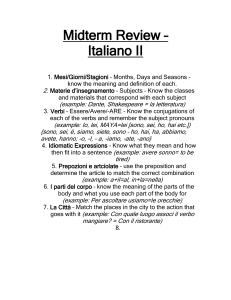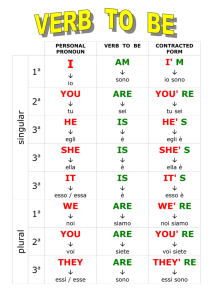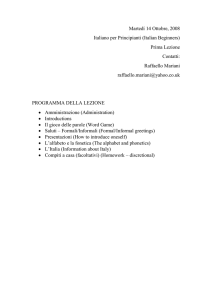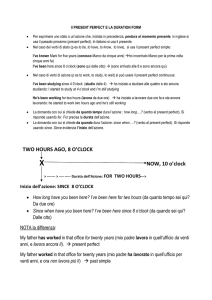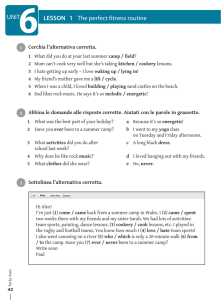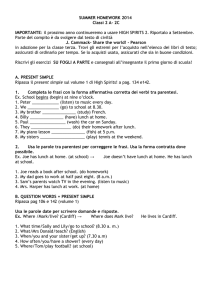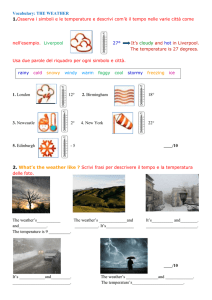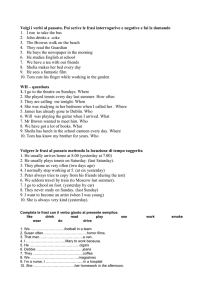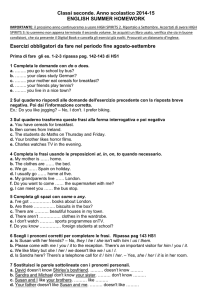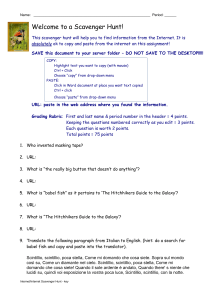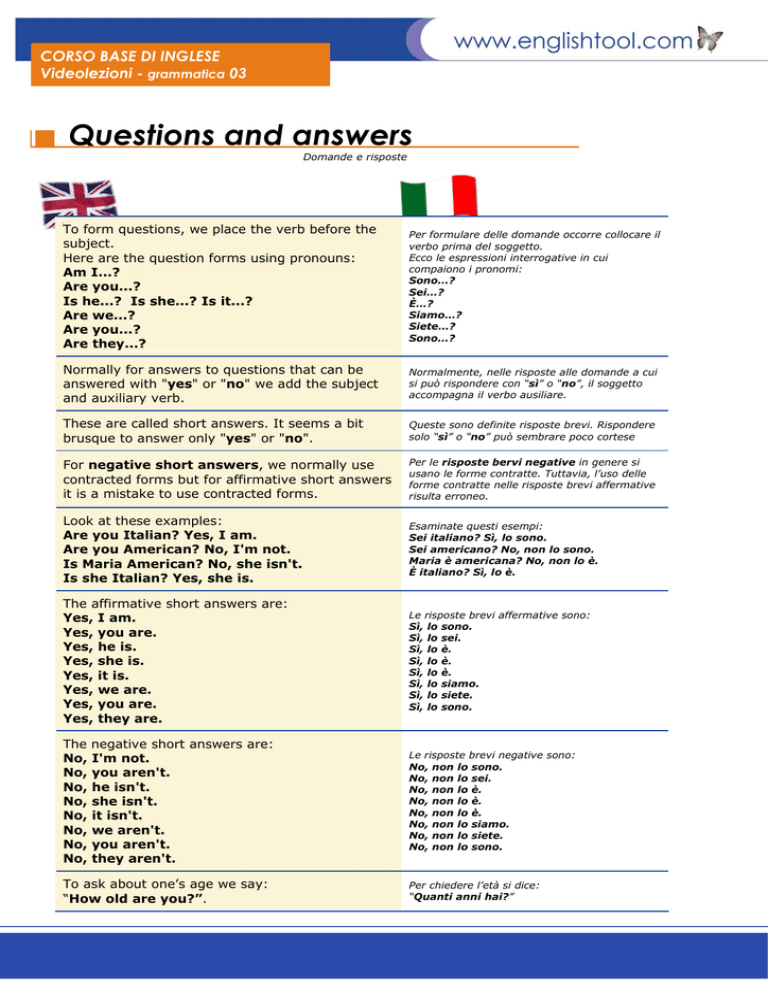
CORSO BASE DI INGLESE
Videolezioni - grammatica 03
Questions and answers
Domande e risposte
To form questions, we place the verb before the
subject.
Here are the question forms using pronouns:
Am I...?
Are you...?
Is he...? Is she...? Is it...?
Are we...?
Are you...?
Are they...?
Per formulare delle domande occorre collocare il
verbo prima del soggetto.
Ecco le espressioni interrogative in cui
compaiono i pronomi:
Sono…?
Sei…?
È…?
Siamo…?
Siete…?
Sono…?
Normally for answers to questions that can be
answered with "yes" or "no" we add the subject
and auxiliary verb.
Normalmente, nelle risposte alle domande a cui
si può rispondere con “sì” o “no”, il soggetto
accompagna il verbo ausiliare.
These are called short answers. It seems a bit
brusque to answer only "yes" or "no".
Queste sono definite risposte brevi. Rispondere
solo “sì” o “no” può sembrare poco cortese
For negative short answers, we normally use
contracted forms but for affirmative short answers
it is a mistake to use contracted forms.
Per le risposte bervi negative in genere si
usano le forme contratte. Tuttavia, l’uso delle
forme contratte nelle risposte brevi affermative
risulta erroneo.
Look at these examples:
Are you Italian? Yes, I am.
Are you American? No, I'm not.
Is Maria American? No, she isn't.
Is she Italian? Yes, she is.
Esaminate questi esempi:
Sei italiano? Sì, lo sono.
Sei americano? No, non lo sono.
Maria è americana? No, non lo è.
È italiano? Sì, lo è.
The affirmative short answers are:
Yes, I am.
Yes, you are.
Yes, he is.
Yes, she is.
Yes, it is.
Yes, we are.
Yes, you are.
Yes, they are.
Le risposte brevi affermative sono:
Sì, lo sono.
Sì, lo sei.
Sì, lo è.
Sì, lo è.
Sì, lo è.
Sì, lo siamo.
Sì, lo siete.
Sì, lo sono.
The negative short answers are:
No, I'm not.
No, you aren't.
No, he isn't.
No, she isn't.
No, it isn't.
No, we aren't.
No, you aren't.
No, they aren't.
Le risposte brevi negative sono:
No, non lo sono.
No, non lo sei.
No, non lo è.
No, non lo è.
No, non lo è.
No, non lo siamo.
No, non lo siete.
No, non lo sono.
To ask about one’s age we say:
“How old are you?”.
Per chiedere l’età si dice:
“Quanti anni hai?”
CORSO BASE DI INGLESE
Videolezioni - grammatica 03
When we answer, we can say "I'm twenty-five" or
"I'm twenty-five years old" but it is a mistake
to say "I am twenty-five years".
Nelle risposte si può dire “I'm twenty-five” (Ho
venticinque anni) oppure “I'm twenty-five
years old”, ma è un errore dire "I am twentyfive years".
When we speak about animals and things, we
must say "years old".
For example, "The car is three years old".
Quando si parla di animali e oggetti, occorre
dire “years old".
Per esempio: “L’auto ha tre anni”.
Other question words in English are "what" and
"where".
You can ask questions like these (and many, many
more):
Altri termini inglesi usati nelle domande sono
“che cosa / di che” e “dove”.
Si possono formulare domande come le
seguenti (e molte altre):
What colour is the car?
Where is London?
Where are we?
Di che colore è l’auto?
Dov’è Londra?
Dove siamo?

